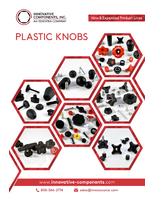EPRI Releases EV fast charger demonstration results.
Press Release Summary:
In February 2012 at its Knoxville, TN laboratory, EPRI demonstrated first prototype 2.4 kV, 45 kVA-based, solid-state, direct-current (DC) fast charging technology for electric vehicles. Using Nissan Leaf and Mitsubishi iMiEV, EPRI demonstrated charging and communication capabilities of Utility Direct Fast Charger technology with EV battery management systems. UI and web-based mobile data collection system were also included in demonstration.
Original Press Release:
EPRI Demonstration Results - Utility Direct Fast Charger
Overview
The Electric Power Research Institute (EPRI) demonstrated the first prototype 2.4kV 45kVA based, solid-state, direct-current (DC) fast charging technology for electric vehicles at its Knoxville, Tennessee laboratory in February 2012. The Utility Direct Fast Charger technology enables the rapid charging of a plug-in electric vehicle (PEV) and can also serve as a utility-owned distribution asset that can be used for other electricity delivery purposes.
The demonstration was conducted using a Nissan Leaf and a Mitsubishi iMiEV. EPRI demonstrated the communication capability of this fast charging technology with electric vehicle battery management systems. A user interface and web-based mobile data collection system were also included in the demonstration.
The EPRI Utility Direct Fast Charger technology was developed by a team of engineers and scientists from EPRI and Enertronics, with financial and technical support from Tennessee Valley Authority (TVA).
Demonstration Results
Testing performed by EPRI has confirmed the 2.4-kV 45-kVA fast charger prototype's ability to provide a full vehicle charge to commercially available plug-in electric vehicles. Two Nissan Leaf and one Mitsubishi iMiEV electric vehicles were successfully charged using the EPRI Utility Direct Fast Charger. An important part of the demonstration was to verify the communications compatibility of the fast charging technology with the electric vehicles' battery management systems using the industry-standard CHAdeMO communications protocol. A user interface and web-based mobile data collection system were included in the Knoxville trials.
Figure 1 shows the input voltage and current waveforms at 2.4-kV ac input and 38-kW output. The current THD is less than 2%, and the power factor is unity. With an entry-level medium voltage of 2.4 kV, the input-side current is only 16 A. For three-phase inputs of 480 V and 208 V, this current could have been more than 50 A and 110 A, respectively.
It should be noted that, in the utility world, the term "medium voltage" refers to a range of kilovolt-level ac voltages (4 kV to 35 kV) used for power distribution across the grid. Within this medium voltage range there are also voltage classes. Systems with voltage levels up to 4 kV are designated as 4-V class distribution systems, while systems with levels up to 15 kV are designated as 15-kV class distribution systems. Both types of systems are found in the utility grid.
This first EPRI Utility Direct Fast Charger prototype represents equipment that would be compatible with a 4-kV class distribution system. EPRI's next step will be to build a fast charger prototype with 8-kV input, which would represent compatibility with a 15-kV class distribution system. Therefore, this second prototype will demonstrate the viability of EPRI's Utility Direct Fast Charger design for 15-kV class systems that use a medium voltage level such as 12.47 kV, 13.8 kV, etc.
Figure 2 compares Leaf and iMiEV charging profiles with an 80-A current setting. The actual charging current is controlled by the EV's battery management system (BMS), which ensures that the EV's Li-ion batteries receive the appropriate charging current in accordance with their required constant-current then constant-voltage charging profile. The BMS in the Leaf commands a current with linear reduction rate to maintain a slow linear voltage increasing rate when the battery voltage exceeds 384 V. The iMiEV's BMS, however, maintains the constant-current charging for a longer period until the voltage reaches 364 V. After that, it maintains constant-voltage charging with a nonlinear current reduction rate. The shutdown command in both cases was pre-programmed at 80% state of charge (SOC).
In addition, the demonstration compared the new technology's performance with that of a commercial 3-phase dc fast charger, shown in Figure 3.
Next Steps for This Project
A few steps are planned for the next phase of this project. This includes building a DC communication interface using a Society of Automotive Engineers (SAE) approved Combo connector that will be used in U.S. The research team also plans to build a fast charger prototype with 8-kV input, which would represent compatibility with a 15-kV class distribution system. The team will also reach out to utilities for their support in conducting field trials and public demonstrations of the technology.
About EPRI
The Electric Power Research Institute, Inc. (EPRI, www.epri.com) conducts research and development relating to the generation, delivery and use of electricity for the benefit of the public. An independent, nonprofit organization, EPRI brings together experts from academia and industry as well as its own scientists and engineers to help address challenges in electricity generation, delivery and use, including health, safety and the environment. EPRI's members represent more than 90 percent of the electricity generated and delivered in the United States, and international participation extends to 40 countries. EPRI's principal offices and laboratories are located in Palo Alto, Calif.; Charlotte, N.C.; Knoxville, Tenn.; and Lenox, Mass.
Contact:
Don Kintner
EPRI
Manager, Communications
dkintner@epri.com
704-595-2506




